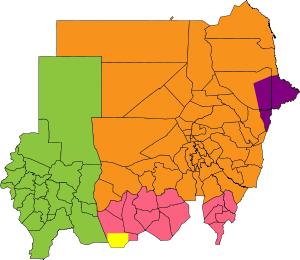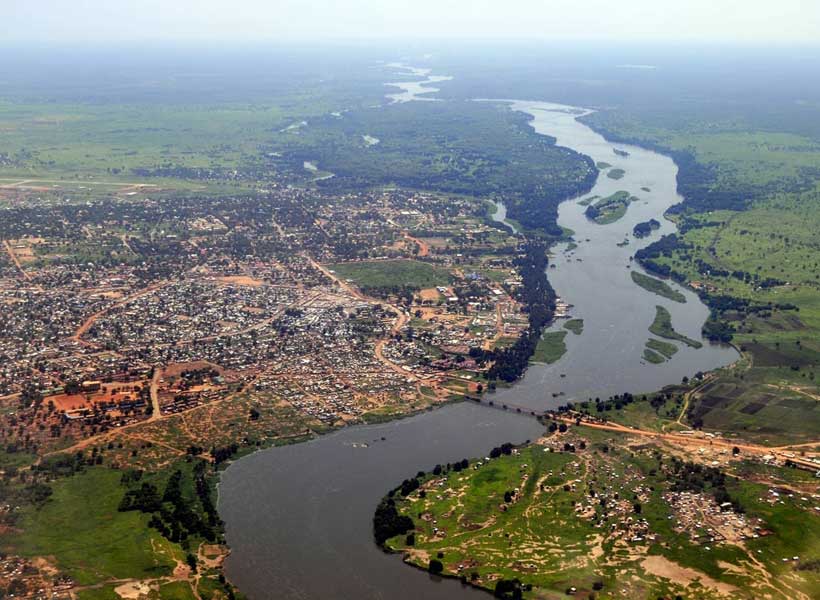




Sudan
Sudan (/suːˈdɑːn/;[10][11] Arabic: السودان as-Sūdān),
officially the Republic of the Sudan[12] (Arabic: جمهورية
السودان Jumhūriyyat as-Sūdān), is a country in Northeast
Africa. Bordered by Egypt to the north, Libya to the
northwest, Chad to the west, the Central African Republic to
the southwest, South Sudan to the south, Ethiopia to the
southeast, Eritrea to the east, and the Red Sea to the
northeast. Sudan has a population of 43 million (2018
estimate)[13] and occupies 1,886,068 square kilometres
(728,215 square miles), making it Africa's third-largest
country and also the third-largest in the Arab world. It was
the largest country in Africa and the Arab world by area
before the 2011 South Sudan's secession.
Sudan's history goes back to the Pharaonic period,
witnessing the kingdom of Kerma (c. 2500 BC–1500 BC), the
subsequent rule of the Egyptian New Kingdom (c. 1500 BC–1070
BC) and the rise of the kingdom of Kush (c. 785 BC–350 AD),
which would in turn control Egypt itself for nearly a
century. After the fall of Kush, the Nubians formed the
three Christian kingdoms of Nobatia, Makuria and Alodia,
with the latter two lasting until around 1500. Between the
14th and 15th centuries much of Sudan was settled by Arab
nomads. From the 16th–19th centuries, central and eastern
Sudan were dominated by the Funj sultanate, while Darfur
ruled the west and the Ottomans the far north. This period
saw extensive Islamisation and Arabisation.
From 1820 to 1874 the entirety of Sudan was conquered by the
Muhammad Ali dynasty. Between 1881 and 1885, the harsh
Egyptian reign was eventually met with a successful revolt
led by the self-proclaimed Mahdi Muhammad Ahmad, resulting
in the establishment of the Caliphate of Omdurman. This
state was eventually toppled in 1898 by the British, who
would then govern Sudan together with Egypt.
The 20th century saw the growth of Sudanese nationalism and
in 1953 Britain granted Sudan self-government. Independence
was proclaimed on 1 January 1956. Since independence, Sudan
has been ruled by a series of unstable parliamentary
governments and military regimes. Under Jaafar Nimeiry,
Sudan instituted Islamic law in 1983.[16] This exacerbated
the rift between the Islamic north, the seat of the
government and the Animists and Christians in the south.
Differences in language, religion, and political power
erupted in a civil war between government forces, strongly
influenced by the National Islamic Front (NIF), and the
southern rebels, whose most influential faction was the
Sudan People's Liberation Army (SPLA), eventually concluding
in the independence of South Sudan in 2011.[17] Between 1989
and 2019, Sudan experienced a 30-year-long military
dictatorship led by Omar al-Bashir accused of widespread
human rights abuses including torture, persecution of
minorities and notably, ethnic genocide due to its role in
the War in Darfur Region that broke out in 2003. Overall,
the regime left 300,000–400,000 dead. Protests erupted in
late 2018, demanding Bashir's resignation, which resulted in
a successful coup d'état on April 11, 2019.

Learn more about Sudan Here!